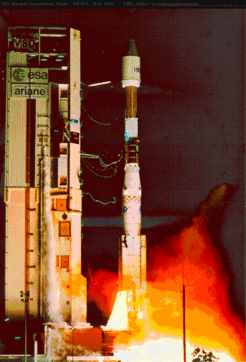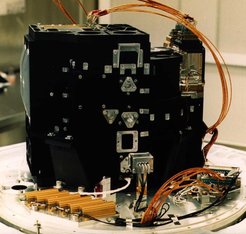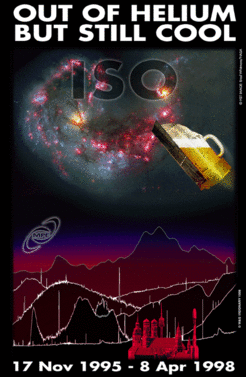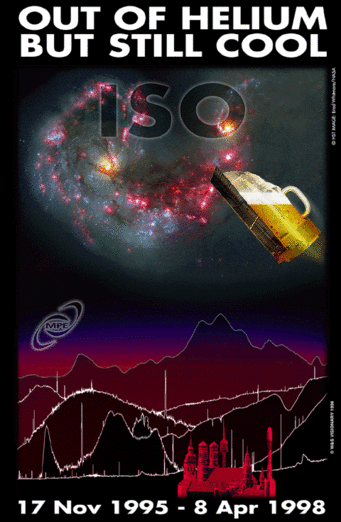Infrared Space Observatory Short Wavelength Spectrometer (ISO-SWS)

On board ESA's Infrared Space Observatory, SWS has been operational from November 17, 1995 until exhaustion of the satellite's liquid helium coolant on April 8, 1998. Being placed in a cryogenic telescope above the earth's atmosphere, SWS has provided unprecedented sensitivity and complete spectroscopic access to the wavelength ranges 2.4 - 45µm at resolution ~1500, and 12 - 45µm at resolution ~30000.

SWS has been jointly developed by the dutch Stichting Ruimte Onderzoek Nederland (SRON, P.I. Thijs de Graauw) and Max-Planck-Institut für extraterrestrische Physik. Calibration of SWS data and improvements of data analysis software continue during the post-operational period, in collaboration between ESA's IDC, SRON, MPE, and KU Leuven.

SWS is providing exciting results on a multitude of subjects including the atmospheres of solar system objects, stars and the interstellar medium, a new view on dust and ices in space, and distant galaxies. ISO research of the MPE infrared group is focussed on infrared spectroscopy of bright galactic nuclei, making use of the ability of infrared radiation to reach regions that cannot be seen in visible light due to thick layers of obscuring dust. A central issue in this research is the search for the power source of ultraluminous infrared galaxies. ISO spectroscopy finds them to be predominantly starburst powered. A second focus of our research is the dense warm interstellar medium in regions such as shocks and photodissociation regions.
MPE is running the ISO Spectrometer Data Center (ISOSDC), providing support on ISO's spectrometers SWS and LWS to the german and where possible international astronomical community.
For further information:
Scientific Publications from MPE projects
ISO Spectrometer Data Center (ISOSDC), Garching, Germany
ISO Data Center (IDC), Villafranca, Spain
Other institues in the ISOWEB


